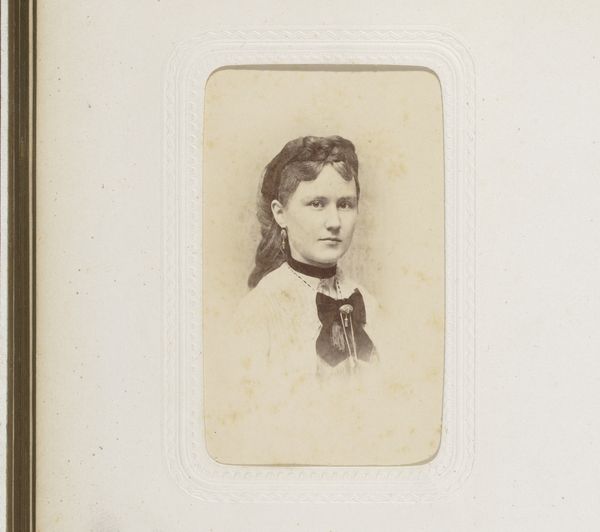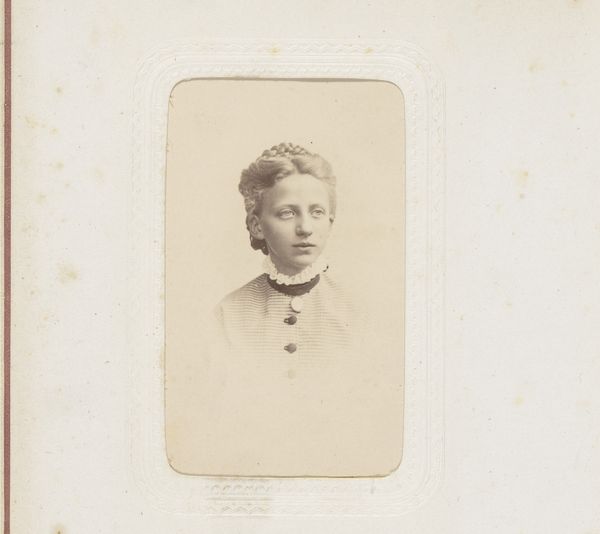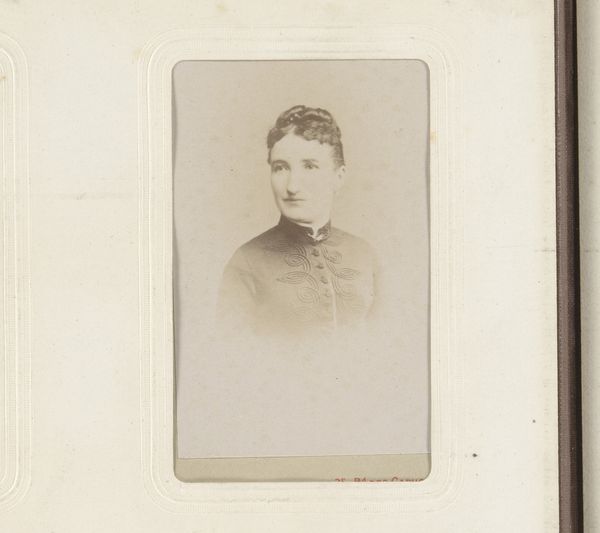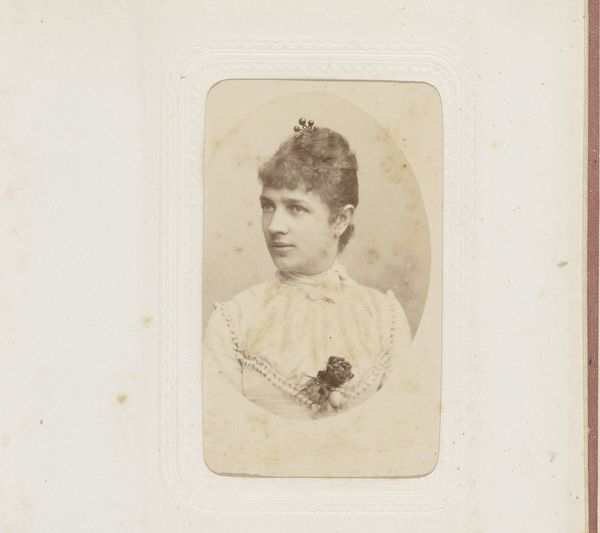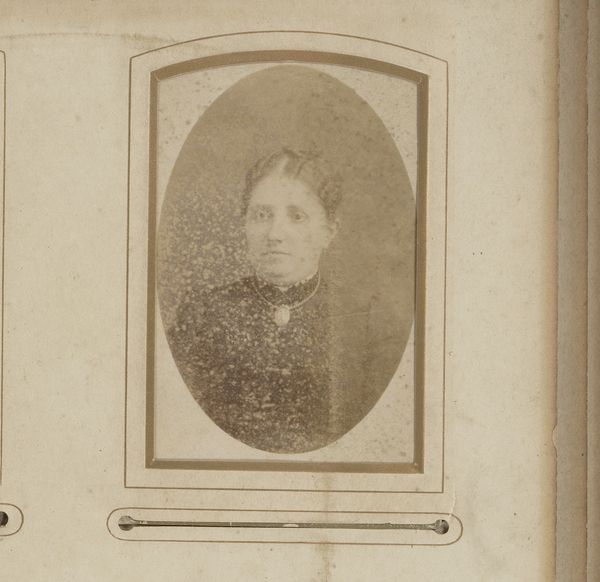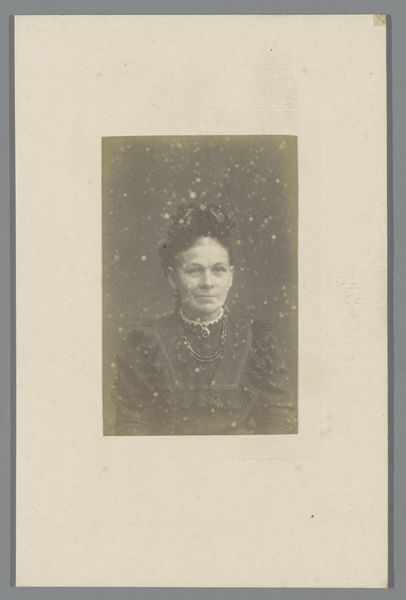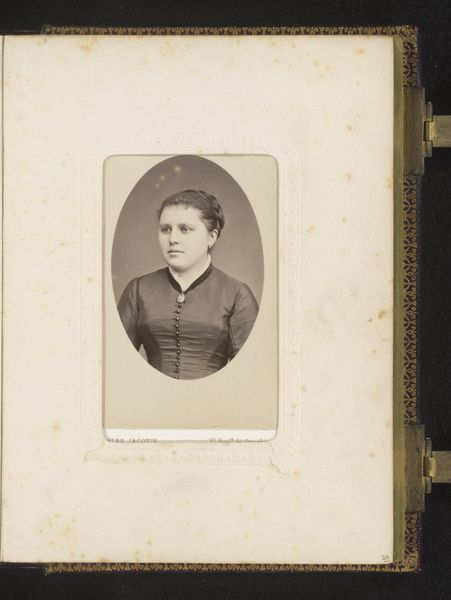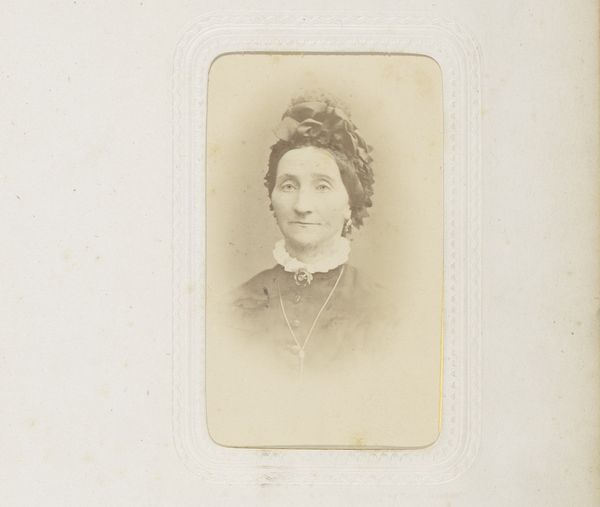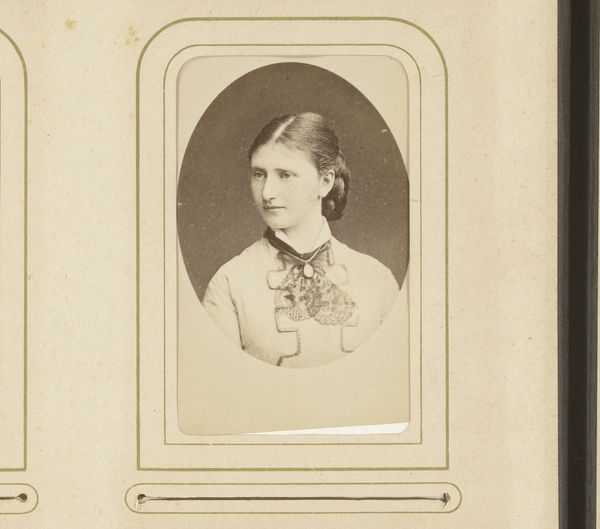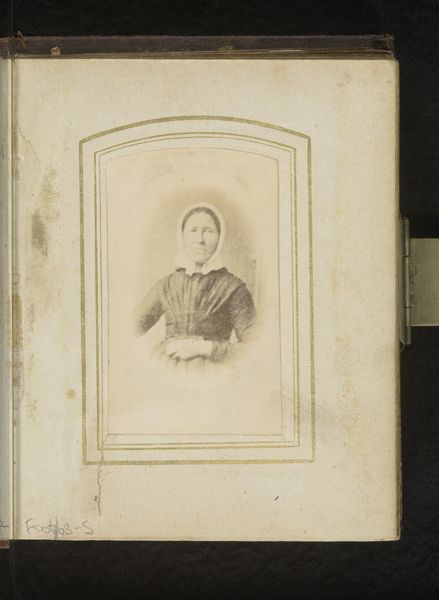
photography
#
portrait
#
photography
#
genre-painting
#
realism
Dimensions: height 82 mm, width 49 mm
Copyright: Rijks Museum: Open Domain
Curator: Here we have an intriguing photographic work, "Portret van een jonge vrouw" or "Portrait of a Young Woman," attributed to A. Hübner and dated somewhere between 1850 and 1900. Editor: It's incredibly delicate, isn’t it? There's a faded, almost dreamlike quality to the photograph, likely an albumen print? You can almost smell the chemicals involved. Curator: Indeed. Early photography was such a complex alchemy. It's remarkable how these images, especially portraits, democratized representation in the 19th century. Suddenly, the burgeoning middle class had access to an art form previously reserved for the wealthy elite who commissioned paintings. Editor: And that accessibility changed how people consumed imagery. Portraiture wasn't just for posterity anymore; it became about personal identity, display, and even aspiration. We see it in the woman’s posture and attire—trying to present an image, a performance, captured by this process. Curator: Precisely! The careful arrangement of her clothes, the set of her jaw, all contribute to a constructed persona designed for public consumption, much like today's carefully curated online profiles. The photographer, Hübner, plays a crucial role in mediating that constructed image through skill, lighting and technology. Editor: And what of Hübner’s social status as photographer in the community at the time, how was his business funded, what kinds of products did they consume in their life? The materials themselves, the paper, the emulsion... all commodities in an evolving marketplace. I find myself wondering about the specific labour practices of this photographic studio? Curator: A good point, as that production process became its own industry, complete with specialized labour. We're given access not only to the image but a sliver of a past culture of social conventions, aesthetics, and burgeoning commercialism. It also reveals a new kind of exchange: an individual sitting to give permission for their likeness to be mass produced and traded within networks of power. Editor: True, looking at her face in particular, there’s a fragility in her gaze—it feels both direct and vulnerable. Almost daring, almost confrontational, especially considering the restrictions on women. The detail and skill are something, yes, but in the end it remains an industrial object, isn't it? Curator: Ultimately, it’s a haunting collision of the individual and the industrial, shaped by forces both intimate and grand. Editor: Very well said, It makes you reflect on all those countless faces that remain lost.
Comments
No comments
Be the first to comment and join the conversation on the ultimate creative platform.
